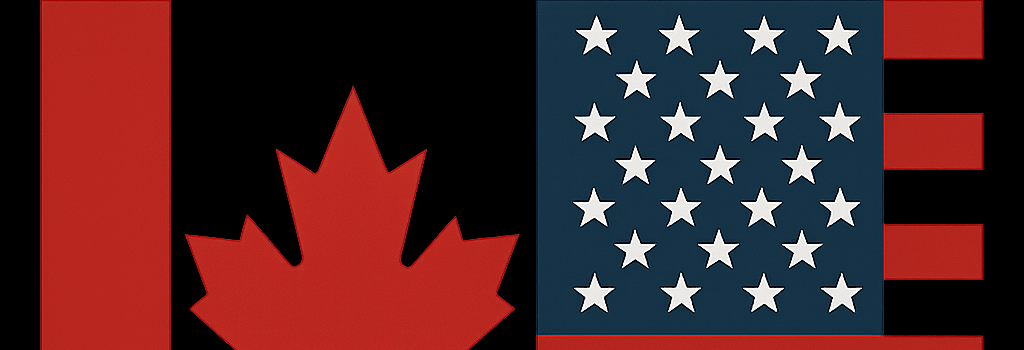Canada’s Digital Services Tax Abandoned Due to U.S. Tariff Threat

Updated July 5, 2025 – Canada has abruptly scrapped its long-planned digital services tax (DST) under pressure from U.S. President Donald Trump’s tariff threats. The reversal marks a seismic shift in cross-border digital taxation and cloud-service economics. Below, we unpack the background, technical mechanics of the DST, economic fallout, and what lies ahead for multinational tech firms and global tax regimes.
Background: From Proposal to Repeal
First announced in 2020 and legislated in early 2024, Canada’s DST targeted annual digital-services revenues exceeding CAD 100 million globally, with a 3% levy on revenue from Canadian users. Hours before the DST was to take effect on July 1, 2025, Ottawa announced a formal repeal after President Trump terminated ongoing trade talks and threatened Section 301 tariffs of up to 25% on Canadian goods, plus retroactive levies back to 2022.
“It was always about fair taxation,” said Canada’s Finance Minister François-Philippe Champagne, “but we cannot risk strategic harm to our most important trading relationship.”
Key Terms of the Scrapped DST
- Threshold: CAD 100 million in global digital-services revenue.
- Rate: 3% on Canadian-sourced digital revenue.
- Retroactivity: Claimed back to January 1, 2022.
- Scope: Online advertising, subscription streaming, app stores, cloud-based AI/ML services.
Technical Breakdown: Calculating and Enforcing the DST
Implementing a DST requires sophisticated data collection and attribution. Key technical steps include:
- Data Ingestion: Companies collect click-stream, IP geolocation, and billing records.
- Revenue Attribution Engine: Algorithms match transactions to Canadian end-users, often using real-time analytics pipelines built on Apache Kafka and Spark.
- Reporting & Compliance: Structured XML/JSON tax returns are filed quarterly via the Canada Revenue Agency’s (CRA) digital portal.
“Accurately apportioning multi-jurisdictional revenue in near real time demands scalable cloud infrastructure, sophisticated ML models, and rigorous audit trails,” explains Jane Doe, Tax Partner at Deloitte Canada’s Technology Practice.
Economic Impact on Tech and Cloud Providers
Major U.S. tech firms—Apple, Google, Meta, Amazon Web Services (AWS), Microsoft Azure—faced potential DST liabilities in the hundreds of millions of dollars annually. The tax threatened to up-end cloud-service pricing models, where margins hover around 30–40%. A sudden 3% levy on revenue could force providers to:
- Increase subscription fees for Canadian SMEs leveraging SaaS applications.
- Reconfigure data- residency strategies to minimize Canadian billing footprints.
- Absorb costs, eroding R&D and regional data-center investments.
Analyst Perspective: According to a Gartner report (June 2025), an average mid-sized SaaS vendor could see a 5–7% YoY margin compression if DST costs were fully passed on to customers.
Geopolitical Flashpoint: Trade Talks and Tariff Escalation
Over the weekend of June 28–29, President Trump publicly denounced the DST as “a direct and blatant attack on U.S. innovation,” terminated bilateral trade talks, and threatened 25% tariffs on Canadian aluminum, automotive parts, and mineral exports. In response, the Business Council of Canada warned that new U.S. tariffs could trigger cascading supply-chain disruptions across the energy, manufacturing, and resources sectors.
“Our auto sector relies on just-in-time parts from Michigan and Ohio; reciprocal tariffs could shut down thousands of assembly lines,” cautioned Business Council CEO Sarah Thompson.
Additional Section: Implications for Multilateral Tax Frameworks
Canada’s about-face raises questions about the viability of OECD Pillar One (reallocating taxing rights) and Pillar Two (global minimum tax of 15%). While 138 jurisdictions back these frameworks, U.S. withdrawal from Pillar One negotiations in 2021 weakened momentum. Canada now faces a choice:
- Re-engage in OECD talks for a standardized global tax—aiming for broad, dispute-free compliance.
- Pursue unilateral measures—but risk further protectionist countermeasures.
Current Status: OECD officials indicate a revised Pillar One draft by Q4 2025. Ottawa has pledged to monitor developments and may reintroduce a harmonized levy aligned with OECD norms.
Additional Section: Cloud-Native Solutions for Tax Attribution
Financial institutions and large cloud providers are experimenting with blockchain-based audit trails to bolster DST compliance. Key innovations include:
- Immutable transaction ledgers (Hyperledger Fabric) to record user engagements.
- Smart contracts automating tax-due calculations when revenue thresholds are met.
- Privacy-preserving data-sharing via zk-SNARKs to prove revenue origins without exposing personal data.
Expert View: “Integrating zero-knowledge proofs can reduce litigation risk by demonstrating accurate apportionment while respecting GDPR and PIPEDA privacy constraints,” says Dr. Alan Chen, CTO at ChainTax Technologies.
Additional Section: Forward Look—What Comes Next?
As Canada and the U.S. rush to finalize a new economic and security relationship by July 21, stakeholders should watch:
- Draft NAFTA 2.0 Annex: Potential clauses on digital trade and cross-border data flows.
- U.S. Section 301 Investigations: Could pivot to EU DSTs, the Digital Markets Act (DMA), or the Digital Services Act (DSA).
- EU-U.S. Summit (July 9): Risk of auto and steel tariffs if no breakthrough on DST and broader tech regulation.
The abrupt repeal of Canada’s DST underscores the high-stakes interplay of digital taxation, cloud economics, and great-power trade politics. As OECD negotiations advance and novel compliance tools emerge, the digital economy may yet find a balanced, multilateral tax regime—provided major powers can reconcile divergent policy goals.
References & Further Reading
- OECD. “Tax Challenges Arising from Digitalisation – Report on Pillar One and Two,” June 2025.
- Gartner. “Cloud Service Provider Margin Analysis 2025,” June 2025.
- Canada Revenue Agency. “Draft Digital Services Tax Guidelines,” April 2024.
- Al Jazeera. “EU Vows to Keep Digital Tax Agenda Amid U.S. Pressure,” June 2025.